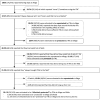Why using bed nets is a challenge among minority populations in Central Vietnam
- PMID: 35292018
- PMCID: PMC8922825
- DOI: 10.1186/s12936-022-04114-9
Why using bed nets is a challenge among minority populations in Central Vietnam
Abstract
Background: Despite freely distributed insecticide-treated nets (ITNs) and health information campaigns to increase their use among populations at risk, malaria transmission persists in forested areas in Vietnam, especially among ethnic minority communities. A mixed-methods study was conducted in four villages of Ca Dong and M'nong ethnicity in Central Vietnam between 2009 and 2011 to assess factors limiting the uptake of ITNs.
Methods: The mixed-methods research design consisted of a qualitative study to explore the context and barriers to ITN use, and a cross-sectional household survey (n = 141) to quantify factors for limited and appropriate net use.
Results: The Ca Dong and M'nong's livelihood was dependent on swidden farming in the forest. Poverty-related factors, including the lack of beds, blankets, the practice of sleeping around the kitchen fire and deteriorated ITNs due to open housing structures, were reasons for alternative and non-use of ITNs. When household members stayed overnight in plot huts at fields, ITNs were even more unavailable and easily deteriorated. 72.5% of households reported having received one net for every two persons, and 82.2% of participants reported to have used ITNs the night before the survey. However, only 18.4% of participants were estimated to be effectively protected by ITNs after accounting for the availability of torn ITNs and the way ITNs were used, for example as blankets, at both village and fields. Multi-variable logistic regression showed the effect of four significant factors for appropriate ITN use: i) being female (AOR = 8.08; p = 0.009); ii) aware of mosquito bites as the sole cause of malaria (AOR = 7.43; p = 0.008); iii) not sleeping around the kitchen fire (AOR = 24.57; p = 0.001); and iv) having sufficient number of ITNs in the household (AOR = 21.69; p = 0.001).
Conclusion: This study showed how social factors rooted in poverty and swidden agriculture limited the effective use of ITNs, despite high coverage, among ethnic minority populations in Central Vietnam. An in-depth understanding of the local context is essential to develop specific indicators for measuring ITN use.
Keywords: Bed net use; Ethnic minorities; Forest malaria; Insecticide-treated nets; Mixed-methods study; Social determinants; Vector control strategies; Vietnam.
© 2022. The Author(s).
Conflict of interest statement
The authors declare that they have no competing interests.
Figures



References
-
- NIMPE. Malaria epidemiological stratification in Vietnam 2014 (Internal report). Hanoi, Vietnam; 2014.
-
- NIMPE. Malaria epidemiological stratification in 2019 (Internal report). Hanoi, Vietnam; 2019.
MeSH terms
Grants and funding
LinkOut - more resources
Full Text Sources
Medical

